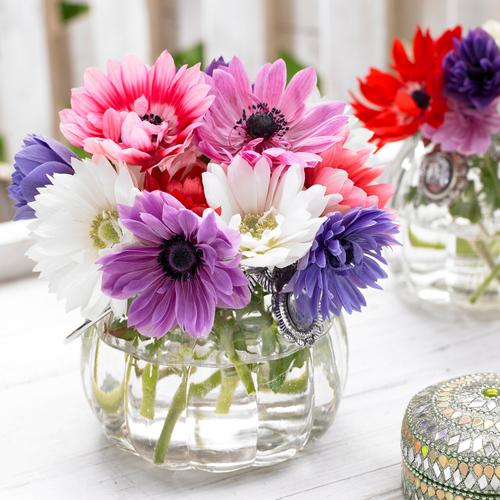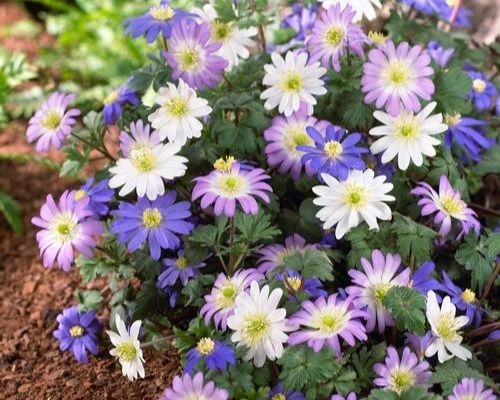Your Guide to Planning, Planting, and Growing Anemones
There are several types of anemones and it's important to know the differences. Some grow from bulb-like corms while others are herbaceous perennials. Depending on the type of anemone you're growing, bloom times range from early spring through fall.

Anemone blanda, also known as Grecian windflowers, grow from corms that are planted in fall for flowers the following spring. These low-growing plants have mounding, finely textured foliage and daisy-like flowers. Anemone blanda is an ideal companion for other spring-blooming bulbs such as tulips and daffodils as well as spring perennials.
Anemone coronaria is best known as a cut flower. The blossoms have brightly-colored petals and dark centers. They bloom in early spring or late summer, depending on where you live and when the corms are planted. De Caen and St. Brigid are the two most common types of Anemone coronaria. Both are outstanding cut flowers that will last 2 to 3 weeks in a vase. In warm zones, the corms of Anemone coronaria are usually planted in fall. In colder zones they are planted in spring. More planting information may be found below. Shop HERE for Anemone blanda and Anemone coronaria
Anemone canadensis and Anemone sylvestris are long-lived perennials that produce snow-white flowers in spring. Anemone x hybrida 'Honorine Jobert' and 'Robustissima' are hardy perennials that bloom in fall and have white or pink flowers.
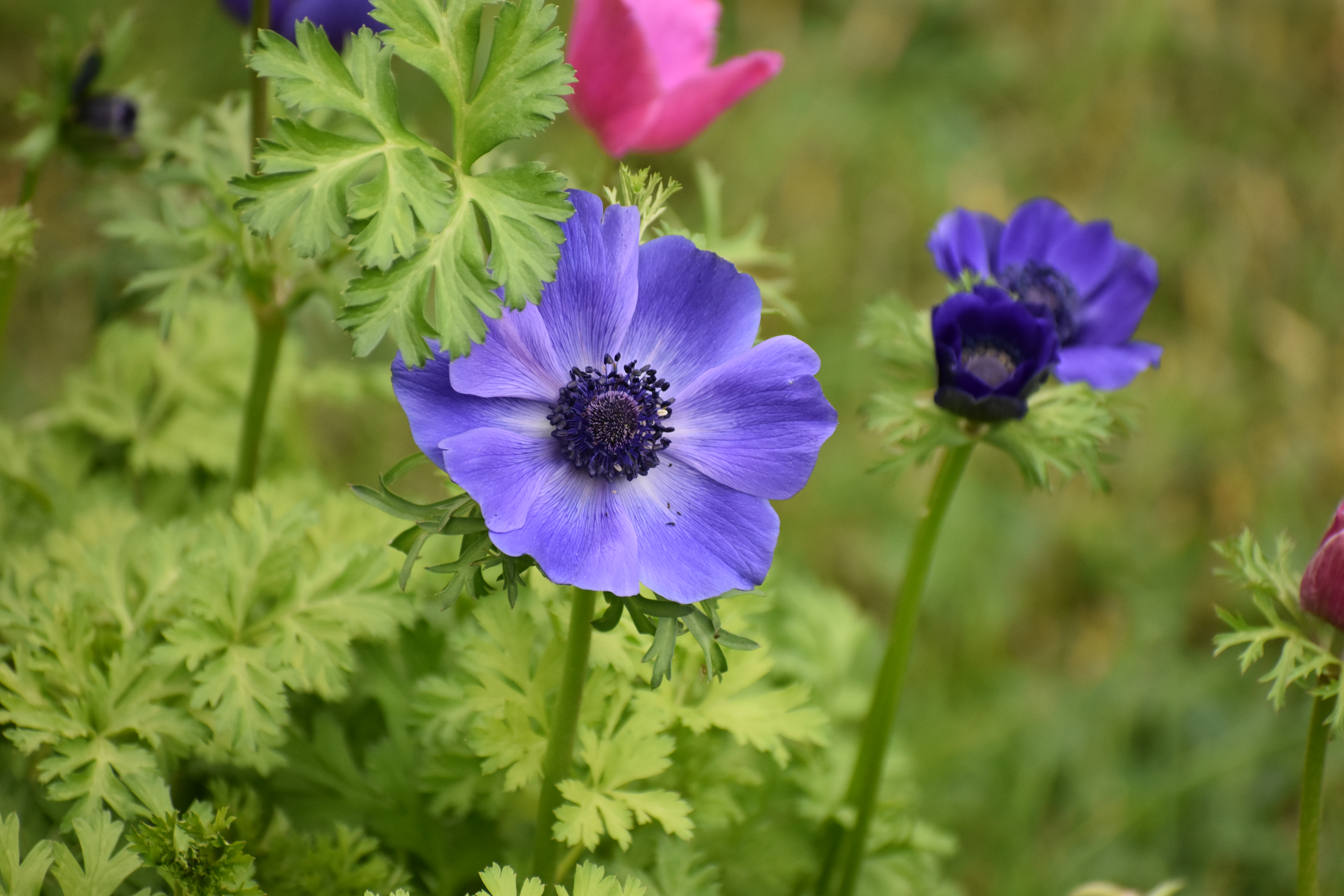
Start with a Better Bulb
When you compare two anemone coronaria corms side by side, it’s easy to see differences in quality. A larger corm (as shown at far left) contains more stored energy and will produce a stronger plant with more flowers. Depending on the type of anemone, Longfield Gardens supplies 5+, 6/7 or 7/8 cm corms to ensure you enjoy the biggest, brightest blooms.

Plan for Success
Sun or Shade: Anemone blanda thrives in light shade, though in cooler zones it may also be grown in full sun. De Caen and St. Brigid anemones may be grown in sun or partial shade, but in cooler zones they flower best in full sun. Herbaceous anemones such as Anemone canadensis, Anemone sylvestris and Anemone x hybrida will grow in sun or light shade.
Winter Hardiness: Anemone blanda is hardy in zones 5-9 and will come back to bloom again each year. De Caen and St. Brigid anemones are winter hardy in zones 7-9. Though the plants will survive the winter in these areas, many gardeners treat them as annuals and plant fresh corms each fall. In colder areas (growing zones 3-6), De Caen and St Brigid anemones are planted in spring and treated as summer-blooming annuals. Anemone canadensis and Anemone sylvestris are winter hardy in zones 3-7 and Anemone x hybrida is hardy in zones 4-8.
Soil Conditions: Plant anemones in well-drained soil. Before planting, you can improve the soil by digging in compost, leaf mold or other organic matter.
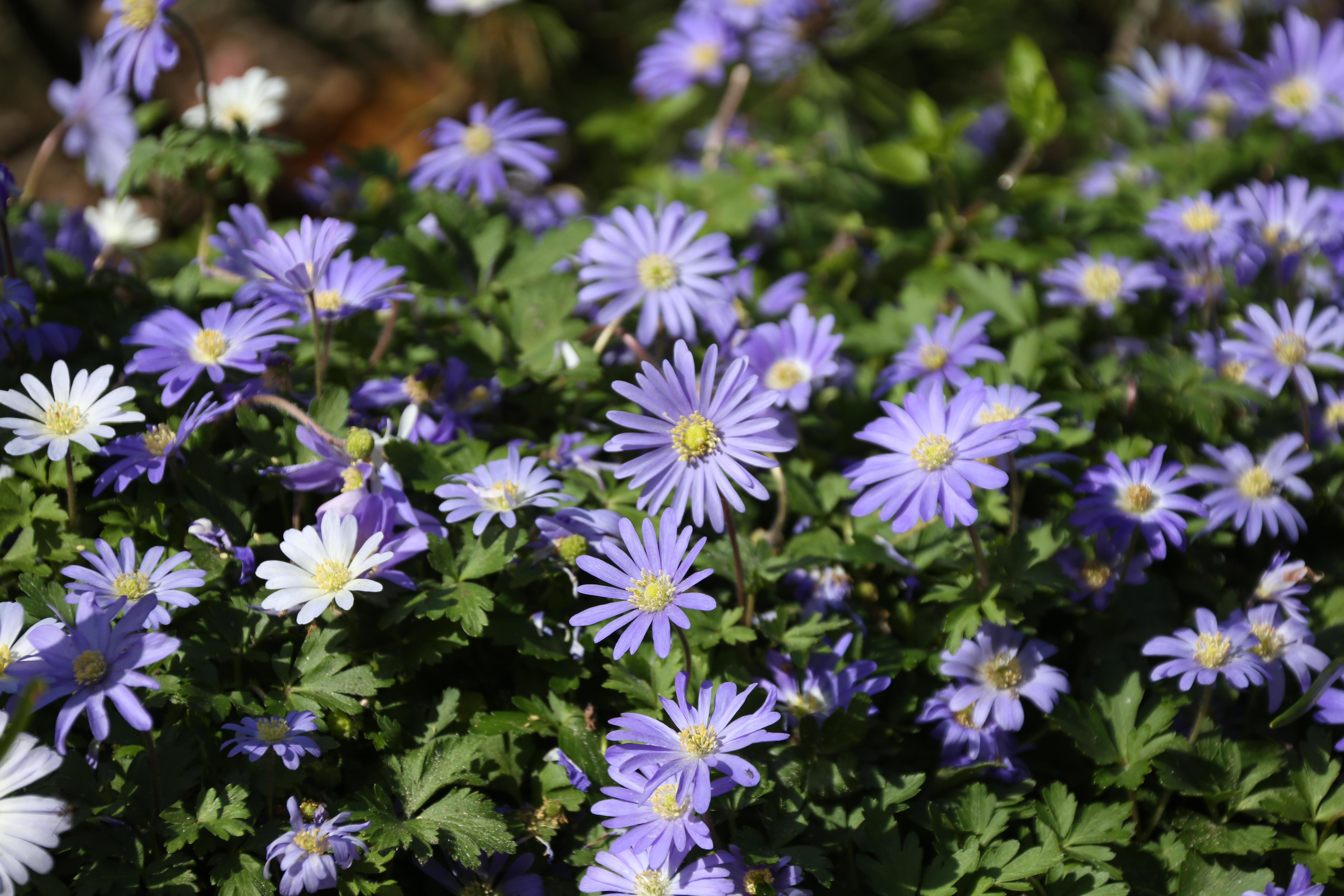
Where to Plant Anemones
Anemone blanda is a compact, 6 to 8” plant with attractive, fern-like foliage. It is an excellent companion for spring bulbs and also pairs well with spring-blooming perennials such as primroses, dicentra and hellebores. When planted in large numbers, anemone blanda can be used to spread a carpet of color through woodlands and shade gardens.
De Caen and St. Brigid anemones do not like to compete with other types plants, so it's usually best to grow them in a cutting garden or on their own in a container. Most flower farmers grow Anemone coronaria under poly tunnels.
Herbaceous anemones such as Anemone canadensis, Anemone sylvestris and Anemone x hybrida can be planted in perennial borders, shade gardens or naturalized areas. They grow well in sun or shade. Be aware that in some areas, these herbaceous anemones can be invasive.
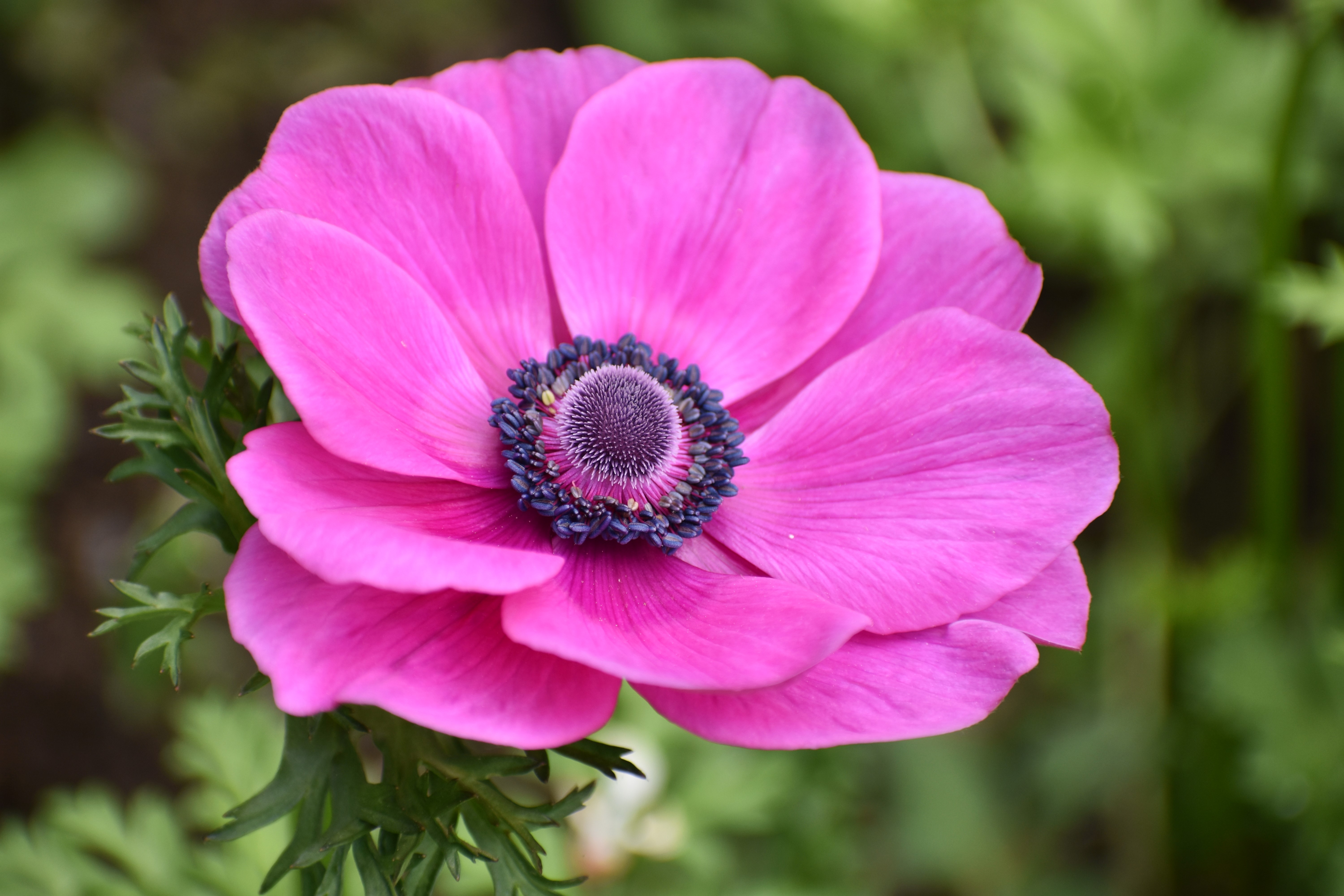
How to Plant Anemones
When to Plant: The corms of anemone blanda should be planted in fall, at the same time as tulips and daffodils. In zones 7-10, DeCaen and St. Brigid anemones are typically planted in the fall for flowers the following spring. In cooler zones, De Caen and St. Brigid anemones should be planted in early spring for flowers in summer. To learn more, read How to Grow Anemones in Cold Climates. Herbaceous anemones may be planted in spring, summer or fall.
Depth and Spacing: Plant anemone blanda 2” deep and 3” apart on center. Plant DeCaen and St. Brigid anemones 3” deep and 3 to 4” apart on center. Plant herbaceous anemones so they are at the same depth as they were in the pot.
Planting Tips: Anemone corms are hard and dry. Soaking them in lukewarm water for 4 hours before planting (no longer!) will make it easier for the sprouts to emerge. The corms of anemone coronaria may be sprouted before planting. To do this, fill a planting tray with 1" of damp growing mix. Scatter the corms over the surface and cover with another inch of damp growing mix. Store tray in a dark place for 10 days at 50-60°F. When you white roots, gently lift and replant the corms. When planting anemone corms, don’t worry about which end is up. They may be positioned in any direction and the sprouts will find their way to the sun.
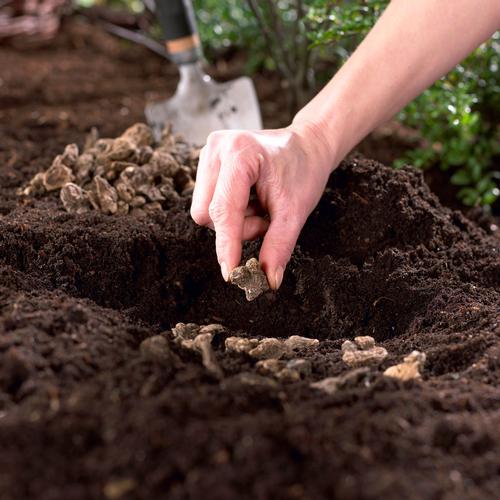
What to Expect
Anemone blanda is native to the Mediterranean, where soils are very well drained, summers are dry, and winters are relatively warm. In the U.S., they prefer similar growing conditions, so are well suited to rock gardens and open woodlands with well-drained soil. After flowering in early spring, the foliage will persist for a while and then die back.
Once De Caen and St Brigid anemones emerge from the soil, it takes 12-15 weeks for the plants to mature and begin flowering. Flowering usually continues for 3 to 6 weeks. It’s normal for these anemones to produce a small root ball, so don’t be concerned if you see very little root growth.
Anemone x hybrida is generally a well-behaved and long-lived perennial. Anemone canadensis and Anemone sylvestris can spread rapidly via underground runners. This may be desirable in some locations, but they are not recommended for perennial gardens.
All anemones are distasteful to deer and rodents.
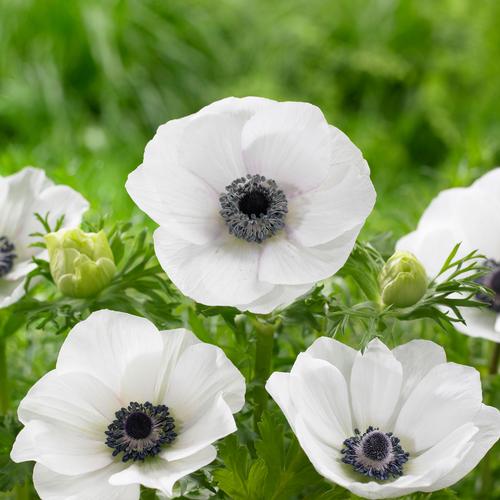
Caring for Your Anemones After they Flower
Most anemones will flower for three to four weeks. After the blossoms fade, allow the foliage to remain so the plant can build up energy for next year’s flowers.
De Caen and St. Brigid anemones are winter hardy in zones 7-8, though they will benefit from an insulating layer of winter mulch. If you live in a colder growing zone or don’t want to risk losing the corms over the winter, you can dig them up in fall after the foliage has died back. Let the corms dry thoroughly and then pack them into dry peat moss. Store these corms separately (not mixed with other types of bulbs) in a dry, well-ventilated place at 50-55°F. Replant in spring. Performance may decline over time, which is why flower farmers usually treat Anemone coronaria as annuals, planting fresh corms each year.
Anemone blanda is hardy to zone 5, but in cold climates, the bulbs appreciate being insulated with straw or leaves to help protect them from extreme cold.
